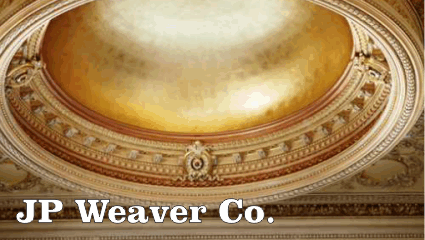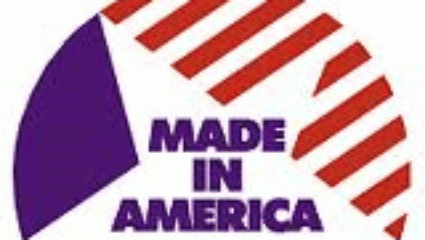Info Click Icon
|
|
Made in America Secrets is a unique search engine like tool that when used, returns only Made in America product providers and their web stores. We also are the only website giving away up to $10,000 for buying Ameircan made products. Our giveaway includes more too. Visitors can also WIN $100 and $1,000 just for buying Made in America products through our website. Check out our WIN $10,000 page it provides the complete details. No gimicks either we pay real money!
Since it's free - try our site next time you are looking for anything made in the US like American Furniture, American Apparel & Clothing, or even Watches that are Made in Detorit, Michigan. Check out our Gift Ideas tab when searching for Made in USA gifts it's quick and easy saving you valuable time. Also if you love Pinterest like we do, check out our Pinnables tab or go direct to our Pinterest Boards. These images are great as reminders for the next time you want to buy American Made products. Our research told us approximately 150,000,000 US consumers are either very interested or extremely interested in buying Made in America products. For them, one of the greatest deterrents to buying Made in America products is not being able to quickly find them. We solve that problem with Made In America Secrets it makes it easy for the US consumer to find and buy any one of thousands of Made in America products. The following are a few examples of these:
Made in America products in the Hardware & Building Supplies category: Made in the USA Fret Molding, Maple Floors, Double Stud Supports, Braided Products, Hurricane Snaps, Wax rings, Slab Insulation, Flats, Metal Roofing Systems, Vapor Light Covers, Elliptical Leg Tanks, Copper Water Tube Hard, Hose bibs, Parking Light, Lockout Protection Relays, Nexus Flanges, Storm Windows, Toy Sheds, Ramset Accessories, Garden Lights / Lighting, Lamp Shades. All from great Made in the USA manufacturers. We link the consumer to thousands of American Made products in over fifty categories.
|
The Tip is 'Where They're Proud' I recently saw an ad in our local newspaper for a big box home improvement store. Their newspaper ad had USA made products and American flags all over it. Several weeks later, I checked the ad again and sure enough they were still advertising their American made products. It was obvious they are proud to carry products Made in America. Their competitors made no mention of things Made in America. I have been to this store and asked what products are made in the USA? A clerk told me they primarily carry imports. Obviously they are not proud. I now realize you can buy many Made in the USA building supplies, including tools Made in USA and appliances Made in USA., in stores that are proud to carry brands Made in the USA. Here is another example of a store proudly carrying products Made in the USA. I was shopping for men's shoes in a local department store when I tried on three different pairs of shoes. I couldn't decide which pair I wanted so I went out on a limb and asked the clerk, "Are these shoes imports?" The salesman said "yes they are" so I asked, "Do you have any Made in America shoes like these?". To my surprise he said, with GREAT PRIDE, "yes sir, we have a whole line of Made In USA shoes". He brought me the same color and style with the Made in USA label. These Made in America shoes were less expensive, came with a better warranty, and were more comfortable. Looking for companies that are PROUD is simple and can have a great impact on our country. I encourage you to try this some time- just ask. You will love it when you realize you are making a difference that all of us will benefit from. With your help America will be ours again and that is a good thing. Buying Tip Continued - Read more on Made in America Products by JP Weaver Early History and Renaissance. Press-molded decoration has been used with various soft plastic materials for centuries. For example, it is known that medieval sculptors press-molded organic mixtures to decorate painted sculptures. But because mixtures based on organic binders such as glue, oil, resins, and waxes are prone to various sorts of degradation, actual survivors are rare. The direct ancestors of the composition craft are most likely found in the Italian Renaissance, however, composition mixtures were not extensively used for architectural decoration during this period, probably due to building traditions as well as relative expense. It is worth nothing that this was an age of experimentation with materials and rediscovery of Greek and Roman designs. Press molded mixtures called pastiglias were used to decorate wooden boxes and picture frames as early as the 14th century. Moldable compositions were discussed by various Renaissance writers. The recipes are extremely varied and include, among their more common and understandable ingredients, gypsum, lead carbonate, wood and marble dust, eggs, pigments, sheep's wool, and various oils and resins. The 18th Century. The first flowering of architectural composition in America took place at the end of the 18th century when ornaments were both imported from England and produced by makers in every major eastern city. All of the conditions were right: molding technologies were well established (architectural papier mache, which, like composition, was produced in molds, had gained widespread acceptance during the middle decades of the century). The raw materials were produced or imported in volume, so the cost of the composition ingredients came down as the cost and availability of highly skilled labor went up. Economic and social conditions favored centralized manufactories in the production of various arts and crafts. Design trends also fed into a favorable reception for composition. A more faithful reinterpretation of Greek and Roman design eventually termed Neoclassical had taken hold in Europe, championed in England by the architect, Robert Adam, after his return from study in Italy in 1758. Although Adam played no direct role in the invention of composition ornament, as has sometimes been said, he patronized English craftsmen who were making it and was generally receptive to new and innovative materials. One early maker, sometimes cited as the inventor of composition by his contemporaries, was John Jaques. His name appears in London advertising by 1785, but he was probably in business before then. As a result of Adam's influence, designers of applied ornament in both Europe and America began to take advantage of a molding process that was ideally suited to producing the detailed, but repetitive, motifs of classical decoration--acanthus leaf, egg and dart, festoons, swags, and paterae--as well as classical themes depicting Greek and Roman gods and goddesses. And as the Neoclassical style became more popular, composition ornament makers increased in number. drawing from manufacturer's catalog Festoons and fabric swags in composition ornament are shown from a manufacturer's catalog. The company, established in 1893, is still in business today. Photo: Courtesy, Decorators Supply Corporation. The 19th Century. During the early decades of the nineteenth century, Neoclassical--encompassed in America by the terms Federal, Empire, and Greek Revival--was in the ascendancy. Composition makers continued to increase and also to find new uses for their material. Composition picture and mirror frames became common and some makers advertised the suitability of composition ornaments for casting iron firebacks and stoves. Composition ornament was explicitly advertised for exterior use as well, although very little has survived. The interiors of houses and public buildings in every prosperous American city were decorated with composition. When the classically derived Federal and Empire styles gave way to the various revival styles-Rococo, Gothic, Renaissance, and Italianate-composition makers simply made new molds to accommodate them. (Although Rococo and Renaissance styles were not common for architecture in America, they were common for furnishings and interior decoration and, in consequence, for composition ornament.) Along with a proliferation of styles in the mid-to-late decades of the century, there was a parallel growth in the number of moldable and castable materials that shared some features of the composition craft, such as carton pierre, gutta percha, fibrous plaster, shellac compositions and, eventually, celluloid and hard rubber. Composition continued to be the preferred material for detailed decoration on wood where the size of the ornament did not make its cost prohibitive. The publication of practical books by and for craftsmen, beginning in the 19th century, disseminated recipes and procedures to a broad audience and de-mystified the craft. Period composition ornaments called imitation wood carvings were widely advertised in manufacturers' catalogs. Balls of prepared compo became available from some art supply shops in large cities for use by small volume craftsmen. During the later years of the century, the Arts and Crafts Movement-as preached by William Morris and his associates and followers-became increasingly important in design and philosophy. Morris stressed honesty to the material in design, exalted spirituality of hand work and rejected manufacturing, mass production and the distinction between high art and craft. These trends were to affect both technology and design in the 20th century. Composition ornament would have been anathema to Morris and his elite clients, most composition production during the last years of the century is best described as Victorian Eclectic. The 20th Century. The Arts and Crafts and related styles, such as the more decorative Art Nouveau, were well rooted in America by the beginning of the century. Pitch molds made from relief-carved patterns had become common in America. The carving tool marks could be accentuated in these patterns in keeping with current vogue. Open-grained woods, such as mahogany, were often chosen so that the finished composition ornaments would have a wood-like grain that showed through stains and varnishes. A uniquely 20th century application of composition ornament was in the lavishly decorated movie palaces of the Depression era. As interest in architectural embellishments declined, particularly as a result of the austere post-World War II styles, so did the composition trade. contemporary studio of J.P. Weaver Co. Shown is the contemporary studio of J.P. Weaver Company. It has manufactured and sold architectural composition ornament continuously since 1917. Photo: Lenna Tyler Kast. Many old firms went out of business and their molds were dispersed or destroyed. The few that remained concentrated on restoration projects or were sustained by diversification into other materials. By the 1950s and 60s, composition as a material and craft had been all but forgotten. An upsurge in hand craft production that started in the late 60s and has continued to the present-as well as increasing interest in historic preservation-has led to the renewed study of old methods and materials, including composition. The few manufacturers that remain have seen a large increase in their business, and an increasing number of people recognize composition as a unique ornamental material and want to conserve, restore, or create it. |
|




